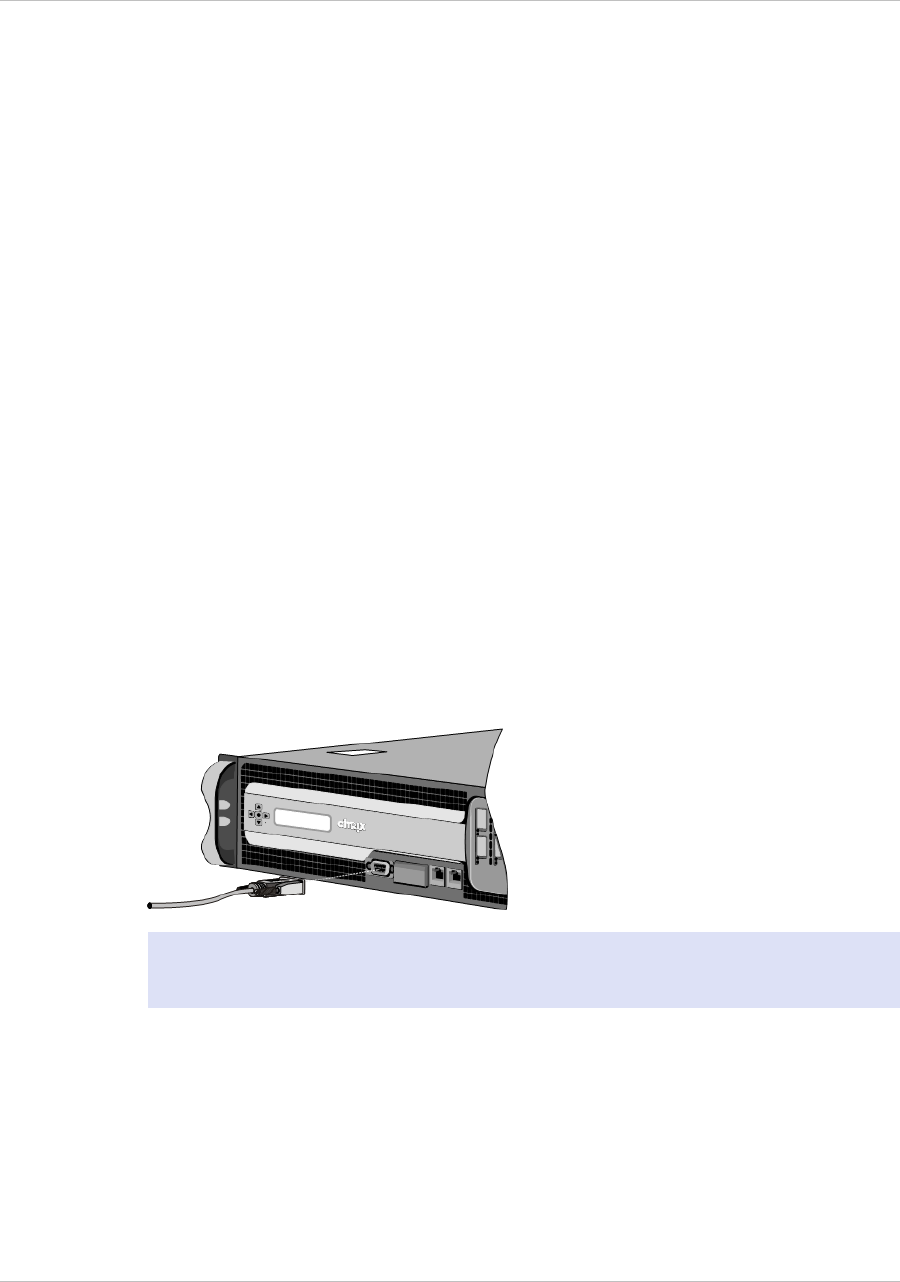
To connect the Ethernet cable to a 1G SFP fiber, 10G SFP+,
or XFP transceiver
1. Remove the dust caps from the transceiver and cable.
2. Insert the LC connector on one end of the fiber optic cable into the appropriate
port on the front panel of the appliance.
3. Insert the connector on the other end into the target device, such as a router or
switch.
4. Verify that the LED glows amber when the connection is established.
Connecting the Console Cable
You can use the console cable to connect your appliance to a computer or terminal,
from which you can configure the appliance. Alternatively, you can use a computer
connected to the network. Before connecting the console cable, configure the
computer or terminal to support VT100 terminal emulation, 9600 baud, 8 data bits, 1
stop bit, parity, and flow control set to NONE. Then connect one end of the console
cable to the RS232 serial port on the appliance and the other end to the computer or
terminal.
To connect the console cable to a computer or terminal
1. Insert the DB-9 connector at the end of the cable into the console port that is
located on the front panel of the appliance, as shown in the following figure.
Figure 3-9. Inserting a console cable
Note: To use a cable with an RJ-45 converter, insert the optional converter
provided into the console port and attach the cable to it.
2. Insert the RJ-45 connector at the other end of the cable into the serial port of the
computer or terminal.
Connecting the Power Cable
An MPX 5500, MPX 5550/5650, MPX 7500/9500, MPX 8200/8400/8600/8800, and 7000
appliance has one power cable. All the other appliances come with two power cables,
but they can also operate if only one power cable is connected, except the MPX
22040/22060/22080/22100/22120 which comes with four power cables and requires
Chapter 3 Installing the Hardware
86
